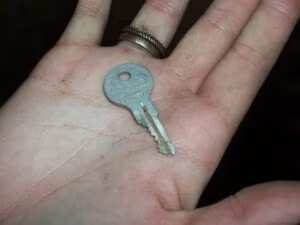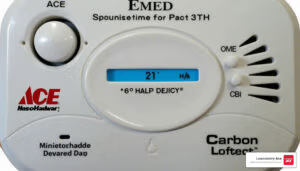Quick Guide to Cleaning and Sharpening Garden Tools:
- Clean your tools with a wire brush or fine steel wool to remove dirt and rust.
- Sharpen cutting tools like pruners and shears with a whetstone or file, maintaining the original angle.
- Lubricate metal parts with light machine oil to protect from rust and ensure smooth movement.
- Handle care involves cleaning wooden handles with a brush, sanding, and applying boiled linseed oil for preservation.
Keeping your garden tools in top shape isn’t just about prolonging their life; it ensures every cut and dig is efficient and precise. Think of it this way: a sharp tool reduces the effort you need to put in and minimizes harm to your plants, making your gardening more enjoyable and effective.
Sharpening your tools is crucial. A blunt tool is a dangerous one because it requires more force to use, leading to accidents. Plus, a clean, sharp cut is better for your plants, helping them heal faster and stay healthy.
Maintaining your garden tools should be a routine task, like cleaning your kitchen after cooking. The right care can turn a good gardening experience into a great one, ensuring your tools are always ready when the gardening inspiration strikes.
The helpful team at Lowcountry Ace recommends regularly cleaning, sharpening, and oiling your tools to keep them in prime condition. Here’s how to get started:
This infographic and the steps above are your quick-start guide to ensure your garden tools are clean, sharp, and ready for action, aiming to provide instant clarity for anyone seeking how to maintain their gardening tools efficiently. Follow along as we delve deeper into the methods and tips that will keep your gardening efforts fruitful and your plants thriving.
Best Practices for Sharpening Garden Tools
Sharpening your garden tools doesn’t just make your gardening tasks easier; it also extends the life of your tools and ensures safer use. Whether you’re dealing with pruners, shears, or saws, understanding the right way to sharpen each tool is crucial. Let’s break down the essentials of sharpening different types of garden tools, focusing on file usage, observing metal coloration, transitioning from rough to fine files, and the importance of de-burring.
Sharpening Different Types of Tools
File Usage:
Using the right file is critical. A mill bastard file is ideal for most garden tools due to its single-cut teeth that offer a fine, sharp edge. When using a file, always move in one direction – push the file away from you to avoid dulling the tool’s edge. This method is particularly effective for shears, loppers, and larger tools like shovels and spades.
Metal Coloration:
Pay attention to the color of the metal as you sharpen. If it turns blue, you’re applying too much pressure or moving too fast, which can heat the metal and weaken your tool. Slow, steady strokes are key.
Rough to Fine File Transition:
Start with a rougher file to remove any nicks or severe dullness, then transition to a finer file for a sharp, clean edge. This two-step process ensures a sharper tool that will last longer between sharpenings.
De-burring:
After sharpening, a burr (a thin ridge of roughness) can form on the edge of the blade. Gently remove this with a finer file or steel wool to ensure a smooth, sharp edge. This step is crucial for maintaining the effectiveness of the cutting edge.
Pruners:
Pruners require careful attention due to their smaller, more delicate blades. Use a diamond file for precision, and remember to only sharpen the beveled side of the blade to maintain its shape and effectiveness.
Shears:
Similar to pruners but larger, shears benefit from the same approach. Start with a coarse file for major dullness, then switch to a finer file. Ensure you maintain the original angle of the blade to avoid damaging it.
Saws:
Saws have teeth that need individual attention. Use a round file that fits the size of the saw’s teeth and file each tooth in the same number of strokes to maintain an even cutting surface.
By following these best practices for sharpening your garden tools, you’ll ensure your tools are not only sharp and efficient but also safe to use. The helpful team at Lowcountry Ace is always ready to provide advice and assistance with selecting the right files and maintaining your garden tools. Keeping your tools sharp is a simple yet effective way to enhance your gardening experience.
Let’s explore how to keep your garden tools clean, ensuring they remain in top condition and ready for whatever gardening tasks you have in store.
Cleaning Garden Tools Effectively
Cleaning Specific Tools
Visual Inspection:
Start with a good look. Before you dive into cleaning, inspect each tool. Look for rust, dirt, or sap. This step helps you decide how much cleaning and what type of care each tool needs.
10% Bleach Solution:
For tools that have come into contact with diseased plants, a 10% bleach solution can be a lifesaver. Mix one part bleach with nine parts water. Soak the tools for a few minutes, then rinse and dry them thoroughly. This helps prevent the spread of disease in your garden.
Anti-bacterial Wipes:
Quick and convenient, anti-bacterial wipes are great for a fast cleanup. They’re especially handy for tools like pruners and secateurs, which are often used to cut through sticky plant material. Just wipe down the blades and handles, and you’re good to go.
Rust Removal:
If you spot rust, don’t panic. Use a wire brush or coarse steel wool to scrub it off. For stubborn rust, soaking the tool in vinegar overnight before scrubbing can work wonders. After rust removal, rinse and dry your tools well.
Cleaning Pruners, Saws, and Secateurs:
– Pruners and Secateurs: Clean off any sap or plant residue with a rag. If they’re really gunky, a soak in soapy water can loosen things up. After cleaning, dry them thoroughly to prevent rust.
– Saws: Use a stiff brush to remove any sawdust or debris from the teeth. If sap has built up, use mineral spirits or a similar solvent to break it down. Wipe the blade down with a clean, dry cloth afterward.
After cleaning, it’s important to dry your tools thoroughly. Moisture is the enemy and can lead to rust. A light coat of oil on metal parts can help protect them until their next use.
By following these steps on how to clean and sharpen garden tools, you ensure your tools are not only effective but also safe to use. The helpful team at Lowcountry Ace is always ready to provide you with the tools and advice you need to keep your garden in top shape. Next, we’ll delve into preventing and removing rust, keeping your tools in pristine condition for years to come.
How to Clean and Sharpen Pruners
Keeping your pruners in top condition isn’t just about making your gardening tasks easier; it’s also about ensuring the health of your plants. A clean and sharp pair of pruners can make precise cuts, reducing the risk of plant diseases. Here’s a straightforward guide on how to clean and sharpen garden tools, focusing on pruners.
Wiping Dry
The first step is simple but crucial. After each use, wipe your pruners dry with a clean rag. This removes moisture and bits of plant residue that can cause rust and dull the blades over time.
Coarse Steel Wool
If you notice rust starting to form or if the blades just aren’t as shiny as they used to be, grab some coarse steel wool. Gently scrub the affected areas. This action helps remove rust without damaging the metal underneath. Gentle is the keyword here.
WD-40 Application
For pruners that have been neglected a bit too long and have developed significant rust, WD-40 is your friend. Spray a bit on the rusted areas and let it sit for about 10 minutes. This gives the WD-40 time to penetrate the rust and loosen it. After soaking, wipe the pruners clean with a rag. You’ll likely find that the rust comes off much easier now.
Diamond File Sharpening
Now for the sharpening part. You’ll need a multi-purpose diamond file for this task. Hold the file at the same angle as the original edge of the blade. Then, using medium pressure, slide the file along the blade from the inside out. This ensures you’re sharpening the blade rather than dulling it. It’s important to maintain the angle and direction for a consistent, sharp edge.
After you’ve sharpened the blade, it’s a good idea to run a fine-grit file over the backside of the blade to remove any burrs. This leaves you with a smooth, sharp edge that’s ready for precise cutting.
A little bit of maintenance goes a long way. By keeping your pruners clean and sharp, you’re not only making your gardening work easier but also helping ensure the health and beauty of your garden. And if you’re unsure about any step in the process or need the right tools for the job, the helpful team at Lowcountry Ace is always ready to assist.
In the next section, we’ll look at preventing and removing rust, an essential part of keeping your garden tools in the best possible condition.
Preventing and Removing Rust
Rust can turn your best garden tools into relics before their time. But don’t worry, with a few simple steps, you can keep your tools rust-free and restore those that have already been affected.
Vinegar and Salt Solution
The first line of defense against rust is a mixture of vinegar and salt. This is a powerful combo that eats away at rust. Here’s how to do it:
- Mix: Combine white vinegar with a good scoop of table salt. The salt boosts the vinegar’s rust-dissolving power.
- Soak: Submerge your rusty tools in this solution. If it’s just a small spot of rust, you can soak a cloth in the mixture and wrap it around the area.
- Wait: Let the tools sit in the solution for at least 12 hours. For serious rust, you might need to leave them soaking for up to 24 hours.
Baking Soda Neutralization
After the vinegar and salt bath, your tools will need a neutralizer to stop the acid from damaging the metal. Baking soda is perfect for this.
- Prepare: Mix water with a generous amount of baking soda.
- Soak: Dip your tools in the baking soda water or pour it over them.
- Rinse and dry: After a few minutes, rinse your tools with clean water and dry them thoroughly.
Steel Wool Scrubbing
Sometimes, even after a vinegar soak, some rust spots might cling on. This is where steel wool comes in handy.
- Scrub: Use steel wool to scrub away any remaining rust. Be thorough but gentle to avoid scratching your tools more than necessary.
- Inspect: Check the tools for any missed spots and go over them again if needed.
Multipurpose Oil
Finally, to prevent future rust and keep your tools working smoothly, apply a coat of multipurpose oil.
- Apply oil: Use a clean rag to apply a thin layer of oil over the entire tool, not just the metal parts. This will help keep moisture at bay, which is the main cause of rust.
- Work it in: Open and close scissors or pruners several times to ensure the oil gets into every nook and cranny.
Remember, if you’re unsure about any step in the process or need the right supplies, the helpful team at Lowcountry Ace is always ready to assist. By following these steps, you can keep your garden tools in top shape, ensuring they’re ready whenever you need them. Next, we’ll answer some frequently asked questions about garden tool maintenance.
Frequently Asked Questions about Garden Tool Maintenance
When it comes to keeping your garden tools in prime condition, a few common questions often come up. Let’s tackle these head-on with simple, clear answers.
What is the best way to prevent rust on garden tools?
Preventing rust is all about keeping your tools dry and properly oiled. After each use, clean your tools to remove dirt and moisture. Once they’re dry, apply a light coat of oil. For garden tools, a light machine oil or a specific lubricant recommended for garden tools works best. This creates a barrier against moisture, which is the main culprit in causing rust.
How often should garden tools be sharpened?
The frequency of sharpening your tools depends on how often you use them. As a general rule, sharpening your tools at least once at the beginning of the gardening season is a good practice. However, if you use your tools very frequently, you might find that sharpening them mid-season keeps them performing at their best. Always pay attention to the performance of your tools; if cutting becomes difficult or the tool isn’t performing as well as it should, it’s probably time for a sharpen.
Can I sharpen my garden tools at home?
Absolutely! With the right tools and a bit of know-how, sharpening your garden tools at home is not only possible but also quite straightforward. You’ll need a file for shears and larger tools, and a whetstone for pruners and smaller, finer blades. Remember to always follow the original angle of the blade’s edge when sharpening. For detailed guidance, don’t hesitate to ask the helpful team at Lowcountry Ace or refer to the manufacturer’s instructions.
Keeping your garden tools clean, sharp, and rust-free doesn’t just extend their life; it also makes your gardening tasks more enjoyable and efficient. With these simple care routines, your tools can serve you well for many gardening seasons to come. If you’re ever unsure about the process or need the right supplies, the helpful team at Lowcountry Ace is always ready to assist. By following these steps, you can keep your garden tools in top shape, ensuring they’re ready whenever you need them. Next, we’ll delve into the benefits of routine maintenance and how Lowcountry Ace Hardware can help keep your garden tools in peak condition.
Conclusion
Taking care of our garden tools isn’t just about keeping them looking good; it’s about making them last longer and work better. Routine maintenance—like cleaning and sharpening—makes a big difference. It helps prevent rust, keeps tools sharp and effective, and saves us money in the long run because we don’t have to replace them as often. Plus, there’s something satisfying about using a well-maintained tool. It just feels right in our hands.
At Lowcountry Ace Hardware, we understand the value of keeping your garden tools in top shape. Our helpful team is here to provide you with the products, advice, and services you need to maintain your tools year-round. Whether you’re looking for sharpening stones, oils to prevent rust, or just some expert advice on how to care for your specific tools, we’ve got you covered.
Routine maintenance of garden tools is an investment in your garden’s future and your own satisfaction as a gardener. By taking the time to clean and sharpen your tools, you’re ensuring that every cut is clean, every dig is smooth, and your gardening experience is as enjoyable and productive as possible.
For all your gardening tool needs, from maintenance supplies to new tools that might just last a lifetime, visit us at Lowcountry Ace Hardware. Let’s keep those edges sharp and your garden flourishing together.
Lowcountry Ace Hardware: Your one-stop shop for home improvement. We offer quality products from trusted brands and expert advice from our experienced staff. Located on James Island, visit us for tools, hardware, fishing gear, power tools, building materials, grills & smokers, electrical and plumbing supplies, and more.







